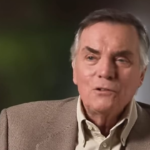Tesla stock fall following a sharp decline in profits
Tesla stock drops 12% following a weak quarter.
Telsa’s profit fell more than 40% in the second quarter compared to the same period last year as the electric vehicle manufacturer experienced a slowdown in the growth of EV sales generally in addition to increased competition from established manufacturers.
For a corporation that rose to become the most valuable automobile in the world thanks to soaring sales and profitability, the decline in profits is a sharp contrast.

The findings highlight how Tesla, a leader in introducing electric cars to American drivers, is currently up against more formidable domestic and international competitors. Additionally, as the EV market matures, customer interest in EVs has waned.
Tesla (TSLA) stock dropped almost 12% on Wednesday morning, which negatively impacted the whole market. After plunging as much as 44% early in the year, Tesla’s stock was down just 1% as of Tuesday’s close.
For the quarter, Tesla recorded adjusted income of $1.8 billion, or 52 cents per share. In contrast to the 91 cents per share it earned the previous year, analysts had predicted earnings of 61 cents per share. Due to the negative impact of several EV price reductions, its primary profit margin indicator dropped significantly.
The company had its first-ever consecutive quarters of negative sales volume during the April through June period, marking the second consecutive quarter of year-over-year revenue decreases. When stay-at-home orders caused Tesla’s plants to close early in the epidemic, the company saw its only revenue decline since going public.
Tesla did not provide a revised annual sales goal. However, a warning was issued: “Our vehicle volume growth rate may be notably lower in 2024 than it was in 2023.”
In the investor call following the release, Tesla CEO Elon Musk belittled the quality of EVs made by rival manufacturers and said that they were a temporary problem for Tesla rather than a long-term one. Tesla stated that it is still of the opinion that all modes of transportation, including cars, ships, and airplanes, will eventually be all electric.
Additionally, Musk announced that the business will provide additional information about fully-automated robotaxis in October as opposed to August as was originally scheduled. Although the firm refers to its driver assistance feature as “Full Self Driving,” users must still be prepared to take control of the vehicle. Tesla stated in its earnings statement that it still needs to overcome technological and regulatory obstacles before it can provide robotoxis without drivers.

Musk cautioned, saying, “My predictions on this have been overly optimistic in the past,” but he still thinks it is possible to accomplish by the end of this year and most probably by the following year.
Federal investigators are looking at several of Musk’s assertions regarding Tesla’s ability to perform fully autonomous driving. The Department of Justice has already conducted an investigation into the corporation; however, the present status of that investigation is unknown.
He did say that Tesla had decided to postpone its ambitions to construct an assembly factory in Mexico. The plans were first disclosed over a year ago, but according to Musk, they have been put on hold until after the presidential election due to Republican contender Donald Trump’s vow to impose taxes on cars imported from Mexico. Musk is a fervent Trump admirer, having backed the former president and allegedly contributed tens of millions of dollars to his reelection. When Trump was president in 2019, he promised to impose comparable duties on automobiles made in Mexico, but he never followed through.
Amidst persistent pressure in its auto sector, Tesla posted second-quarter profits that fell short of forecasts, causing a 12% decline in the company’s shares on Wednesday morning.
On Tuesday, Elon Musk’s electric vehicle company said that its adjusted profitability margin plummeted and that its automotive revenue for the June quarter dropped 7% year over year to $19.9 billion.
Due to declining sales and increasing competition, particularly in China, one of its important markets, the company has been compelled to lower prices globally and provide discounts and incentives.
The S&P 500 has increased by more than 16% this year, while Tesla’s stock has decreased by about 1% thus far.
Although Tesla is still by far the largest seller of electric cars in the United States, it is losing market share to an increasing number of competitors as a result of its older sedan and SUV lines as well as the influence of Elon Musk’s divisive and political remarks.
Bulls and bears have been fighting over the stock; some think Musk’s core vehicle business is under threat, while others are still optimistic about the future he has promised in terms of robotaxis, artificial intelligence, and autonomous driving.
In addition to the Tesla tale, the market has been paying close attention to other details, such as the company’s upcoming mass-market vehicle launch date, which is expected to add new models to its lineup. During the Tuesday results call, Musk stated that Tesla is on schedule to release a new, “affordable” vehicle in the first half of 2019.
The earnings call was heavily focused on robotaxis. According to Musk, owners of Tesla vehicles would be able to approve the usage of their vehicles as part of an autonomous ride-hailing service similar to Uber.









